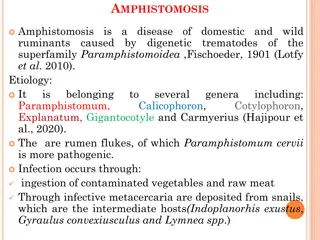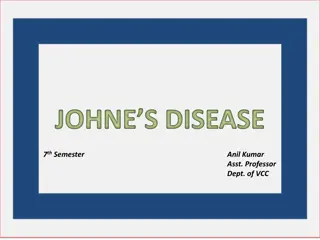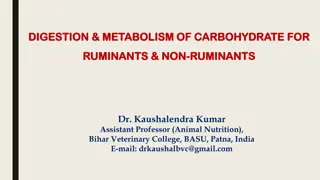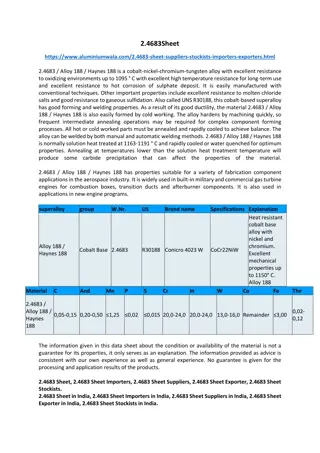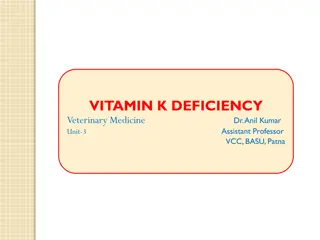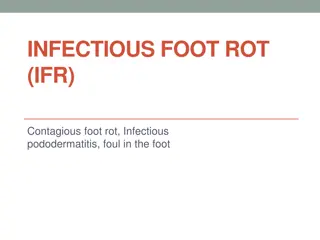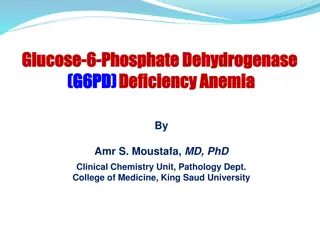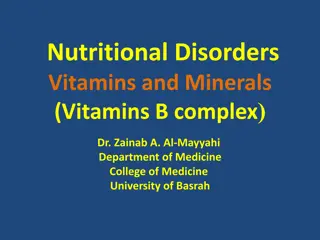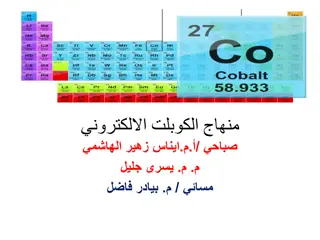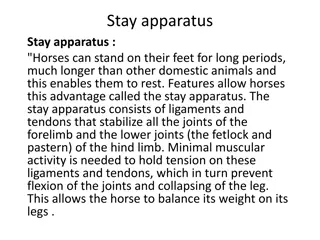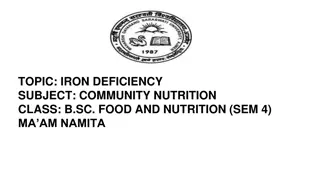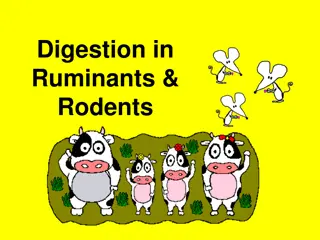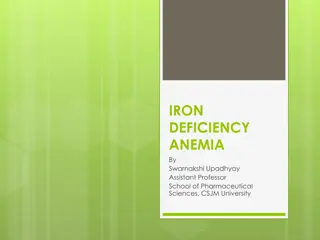Cobalt Deficiency in Ruminants: Causes and Clinical Signs
Cobalt deficiency in ruminants can lead to serious health issues, including inappetence, weight loss, and reproductive problems. It is primarily caused by a lack of cobalt in the diet, resulting in a vitamin B12 deficiency. This deficiency impacts various metabolic pathways essential for the animals' well-being, affecting their glucose production, wool growth, and overall health. Understanding the etiology and clinical signs of cobalt deficiency is crucial for effective management and prevention in cattle and sheep.
Download Presentation

Please find below an Image/Link to download the presentation.
The content on the website is provided AS IS for your information and personal use only. It may not be sold, licensed, or shared on other websites without obtaining consent from the author.If you encounter any issues during the download, it is possible that the publisher has removed the file from their server.
You are allowed to download the files provided on this website for personal or commercial use, subject to the condition that they are used lawfully. All files are the property of their respective owners.
The content on the website is provided AS IS for your information and personal use only. It may not be sold, licensed, or shared on other websites without obtaining consent from the author.
E N D
Presentation Transcript
COBALT DEFICIENCY ) By Dr. Hussein AlNaji
2 COBALT DEFICIENCY Cobalt deficiency is a disease of ruminants ingesting a diet deficient in cobalt, which is required for the synthesis of vitamin B12 (cyanocobalamin) by rumen microflora. The disease is characterized clinically by inappetence and loss of body weight. Some effects on reproductive performance in sheep have been reported.
ETIOLOGY 3 The disease is caused by a deficiency of cobalt in the diet, which results in a deficiency of vitamin B12. 1. Vitamin B12 is central to many metabolic pathways, including the conversion of propionic acid to glucose (the only direct source of glucose for ruminants) and the metabolism of methionine, which is essential for wool growth and the transport of folic acid into liver cells. Epidemiology Occurs worldwide, primarily in cattle and sheep, where soils are deficient in cobalt and no supplements are given. Associated with ovine white liver disease and phalaris staggers.
Ovine White Liver Disease A specific hepatic dysfunction of sheep has been described in New Zealand, Australia, the United Kingdom, Norway, and in grazing lambs in the Netherlands. It is called white liver disease because of the grayish color of the liver. Clinically, it is manifested by photosensitization when the disease is acute and anemia and emaciation when the disease is chronic. Hepatic Lipidosis in Goats Hepatic lipidosis of goats in Oman is associated with low serum vitamin B12 and low liver cobalt and can be experimentally reproduced by a low intake of cobalt.
Pathogenesis Propionic acid from rumen fermentation involves adenosyl cobalamin The essential defect in cobalt- deficient ruminants is an inability to metabolize propionic a Cobalamin, one of several containing coenzymes of the vitamin complex required conversion methylmalonyl coenzyme succinyl coenzyme A cobalt- B12 The lack of vitamin B12 causes accumulation of methylmalonic acid, which can be measured in the serum that for is Both intermediates in the utilization pathway propionate.1 propionate-succinate pathway is ratelimiting vitamin B12 deficiency the of of The A to the first in pathway
6 Clinical signs No specific signs are characteristic of cobalt deficiency. Inappetence, gradual loss of body weight, pica, marked pallor of the mucous membranes, and lacrimation. Decreased wool growth, milk production, and lambing percentage. Clinical pathology 1. Liver cobalt or vitamin B12 concentration. 2. Serum vitamin B12 (sheep). 3. Elevated methylmalonic acid in plasma and urine; 4. elevated formiminoglutamic acid in urine. 5. Normocytic normochromic anemia.
Necropsy findings/Emaciation, hemosiderosis of spleen 7 Differential diagnosis 1. list Common causes of ill-thrift in ruminants. 2. General nutritional deficiency (protein and energy) 3. Intestinal helminthiasis 4. Copper deficiency Johne s disease TREATMENT Cobalt and Vitamin B12 Affected animals respond to oral dosing with cobalt or the IM injection of vitamin B12. Oral dosing with vitamin B12 is effective, although the commonly used dose of 0.1 mg/ kg will only increase serum B12 for up to 6 weeks, and thus larger or repeat doses are often required.
8 Thank You



